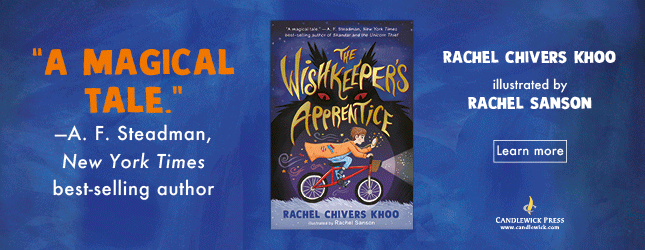Review Detail
2.3 3
Middle Grade Fiction
203
Let's Get Microscopic
Overall rating
4.5
Plot
N/A
Characters
N/A
Writing Style
N/A
Illustrations/Photos (if applicable)
N/A
I sincerely think this book is better than the first one. (I suspect the 11-year release gap between book 1 and 2 may have positively contributed.) The writing, the cohesion, the clarity, the emotional conveyance... everything is taken up a notable notch. Not to mention, the focal idea of the vast and infinite being both macro and micro is the best kind of brain hurt this reader could hope for.
This second book in the series stands alone quite completely. So much so, there’s almost no sense for (or reference to) the cross-universe rescue adventure that composed the previous book—though this was largely the same cast of characters and took place just a year after. The closest we get is Meg's hinting that the reason Calvin is so close to her and her brother has something to do with what they've been through together. But while I found that a little strange, it didn’t distract from the overall narrative.
Helpful Vocab Words:
*Yadah: the third person singular form of the Hebrew verbal root ydh, which depending on its conjugation carries a range of meanings involving throwing or praising.
*Kything: derived from the Old English kythe, cýðe; a word known from both The Vespasian Psalter (c.825) and the West Saxon Gospels (c.1025). [1] Meaning "to announce, proclaim, declare, tell, to make known in words, to manifest, to make visible", it survived as the Scottish dialect word kythe.
*Echthroi (??????): is a Greek plural meaning "The Enemy" (literally "enemies"). The singular form of the word, Echthros (??????), is used in many versions and translations of the Bible for "enemy".
While I enjoyed the Fantastic Voyage flavored premise with its philosophical and moral emphasis, it did bother me a bit that L’ Engle didn’t get the science quite right. (i.e. mitochondria don't produce oxygen. They USE oxygen, though, to generate ATP--which the cell then uses as a source of chemical energy. Mitochondria are essential to our utilization of oxygen as an energy source.) One can look at this as a simple reminder that these books are sci-fi FANTASY. But In doing a bit of research, it seems that L’Engle was likely inspired by the endosymbiotic theory of mitochondrial origins, which had been proposed by Lynn Margulis just six years prior to this book’s publication. She may have confused mitochondria with chloroplasts (found only in plants, which DO do produce oxygen as a byproduct of the conversion of carbon dioxide and water during photosynthesis.) But this particular misunderstanding doesn’t seem to have hampered the passion for science these books have inspired in many over the years.
I have to applaud it for the wonderfully healthy sibling relationships that are depicted, and the overall functionality of the Murry family. I may have hesitated a bit over the biology, but the relational aspects were seamlessly portrayed.
This second book in the series stands alone quite completely. So much so, there’s almost no sense for (or reference to) the cross-universe rescue adventure that composed the previous book—though this was largely the same cast of characters and took place just a year after. The closest we get is Meg's hinting that the reason Calvin is so close to her and her brother has something to do with what they've been through together. But while I found that a little strange, it didn’t distract from the overall narrative.
Helpful Vocab Words:
*Yadah: the third person singular form of the Hebrew verbal root ydh, which depending on its conjugation carries a range of meanings involving throwing or praising.
*Kything: derived from the Old English kythe, cýðe; a word known from both The Vespasian Psalter (c.825) and the West Saxon Gospels (c.1025). [1] Meaning "to announce, proclaim, declare, tell, to make known in words, to manifest, to make visible", it survived as the Scottish dialect word kythe.
*Echthroi (??????): is a Greek plural meaning "The Enemy" (literally "enemies"). The singular form of the word, Echthros (??????), is used in many versions and translations of the Bible for "enemy".
While I enjoyed the Fantastic Voyage flavored premise with its philosophical and moral emphasis, it did bother me a bit that L’ Engle didn’t get the science quite right. (i.e. mitochondria don't produce oxygen. They USE oxygen, though, to generate ATP--which the cell then uses as a source of chemical energy. Mitochondria are essential to our utilization of oxygen as an energy source.) One can look at this as a simple reminder that these books are sci-fi FANTASY. But In doing a bit of research, it seems that L’Engle was likely inspired by the endosymbiotic theory of mitochondrial origins, which had been proposed by Lynn Margulis just six years prior to this book’s publication. She may have confused mitochondria with chloroplasts (found only in plants, which DO do produce oxygen as a byproduct of the conversion of carbon dioxide and water during photosynthesis.) But this particular misunderstanding doesn’t seem to have hampered the passion for science these books have inspired in many over the years.
I have to applaud it for the wonderfully healthy sibling relationships that are depicted, and the overall functionality of the Murry family. I may have hesitated a bit over the biology, but the relational aspects were seamlessly portrayed.
Comments
Already have an account? Log in now or Create an account



































